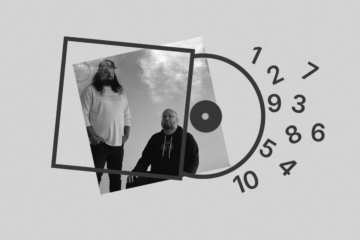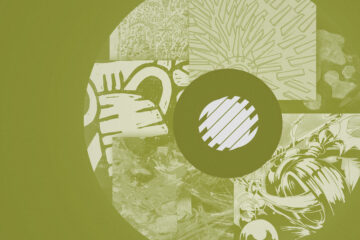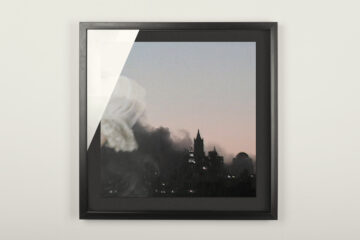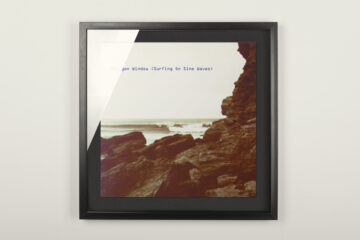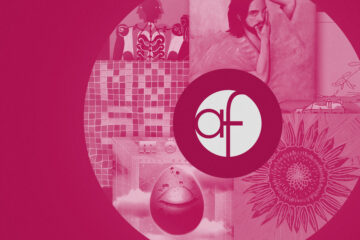The name Merzbow is inevitably associated with superlatives. Discogs alone lists over 550 albums under this name, and on RateYourMusic it appears in connection with over 1,100 releases. These include the »Merzbox,« a compilation of 50 CDs released in 2000 that has become (in-)famous in the meantime, although since the release of the »10×6=60CDBox« in 2021, it is not even the most extensive release in his discography anymore.
However, both are eclipsed in size, at least if the rumours around a very unconventional release is to be believed: when the label The Releasing Eskimo put out the album »Noisembryo« in 1994, its owner allegedly rigged the CD player of a used car in such a way that it automatically played the album without interruption after the automobile was started and put up the »Merzcar« for sale as a limited special edition—though, according to a statement released later, he did not succeed in selling it.
»Noisembryo« is also one in a series of Merzbow albums from the 1990s that were mastered much louder than was standard or simply legal at the time. For years there was nothing louder than a Merzbow CD. And of course what could be heard on those albums pushed the boundaries as well: high-frequency hissing and gnarly bass throbs, pulsating and explosive bursts of sound that are hard to listen to—harsh noise, presented usually without much pause for breath for more than half an hour of playing time. And when Merzbow shows up to a Boiler Room set, it’s with a buzzsaw in hand.
These facts and figures contribute to a myth that has made Masami Akita’s project somewhat infamous around the world. However, few listeners know more than a handful of albums from his broad discography. His two solo albums on Relapse, »Venereology« (1994) and »Pulse Demon« (1998) with its iconic artwork, as well as »1930« (1998, Tzadik) or »Noisembryo« are commonly associated with the project. »Merzbow has so many works that few listeners are aware of many of them,« Akita confirms in an email. »It’s fine if relatively well-known works such as ›Pulse Demon‹ and ›1930‹ are appreciated.«
However, this also means that broad sections of the public are at best familiar with a very specific era in the career of an artist whose work in and with sound and noise has taken very different forms over more than four decades.
Surrealism in Music
Born on 19 December 1956 in Tokyo Prefecture, a teenage Akita becomes interested in blues, psych and prog rock from Jimi Hendrix to Mike Ratledge, as well as jazz outfits such as the Cecil Taylor Unit. The influences largely come from outside. »I had been exposed to Japanese Rock, Free Jazz and Free Music since the early 1970s,« Akita recalls today. »However, there was no movement or scene in Japan that directly influenced me when I started Merzbow.« Instead, the project is being developed largely organically together with classmate Kiyoshi Mizutani, with whom Akita starts making music together first in 1974, before they quickly turn to improvised music.
In addition to rock and jazz, Akita also becomes increasingly interested in early electroacoustic and electronic music from Europe, a continent with a long tradition of exploring the aesthetic potential of sounds, starting with Luigi Russolo’s so-called Intonarumori and his manifesto »L’arte dei rumori« and extending to musique concrète from the circle of the Groupe de recherches musicales (GRM).
The groundbreaking musique concrète piece »Symphonie pour un homme seul« by GRM founder Pierre Schaeffer and Pierre Henry becomes a key work for him: »At the time, I had been searching for surrealism in literature and art and wondering why there was none in music,« Akita explains. »I was not satisfied with Arnold Schönberg’s ›Pierrot Lunaire‹, Pierre Boulez’s ›Le Marteau Sans Maître‹, etc., as surrealist music, as they are often referred to. ›Symphonie pour un home seul‹ seemed to me the closest thing to surrealist music that I could imagine.«
»In the case of live concerts, it is also about the loudness of the sound. Acoustically, we may be hostile to one another,«
Merzbow
Inspired by this, Akita gravitated towards tape music and a cut-up aesthetic that was to dominate Merzbow’s early phase. The connection to visual art and above all surrealism as well as the related art movement Dadaism was not only expressed in titles of early releases such as »Remblandt Assemblage« (1981, ZSF Produkt), but also in the project name itself, which is a play on the spatial installations called »Merzbau« by Dada artist Kurt Schwitters in his Hanover studio and flat as well as later other places.
Merzbow’s numerous releases in the early and mid-1980s proceed in a very similar way with discrete and found sounds or archive material as Schwitters did with his grotesque interior constructions: they are constructed as sound collages or assemblages, blending different elements together, pushing them into each other, letting them run against each other. In this way, they create alienating effects that transform concrete sounds into abstract constellations.
The records, mainly released on tape through Akita’s own labels Lowest Music & Arts and later ZSF Produkt, move along the borders between music and noise and try to track down the surrealistic potentials of the interweaving of different sounds. In the words of a forefather of literary surrealism, Comte de Lautréament, they aim at the chance meeting of a sewing machine and an umbrella on a dissecting table.
From Tokyo to the World
The foundations for what is now widely known as Japanese noise, also called noizu, were laid in the Kansai region from the late 1970s and early 1980s. The group Hijokaidan and the label Alchemy Records, among others, were formed around the kissa drugstore, a listening bar in Kyoto; while in Osaka, Yamatsuka Eye founded the project Hanatarash and Masonna made a name for himself starting in the early 1980s. Many of these projects in the early days of noizu follow a performance-based approach that is bordering on the transgressive. It wouldn’t be quite correct to speak of a subculture, though: these are free radicals who find each other now and then, bonding over a desire to explore the boundaries between sound and noise.
In the Japanese capital, similar structures develop as well. »In the early 1980s in Tokyo, there were scenes around the label Pinakotheca Records and the live venue Kichijoji Minor. I played at Minor as an audience member and once with a New Wave band called Tric Up,« remembers Akita, whose live performances continued to rely on improvisation until Mizutani left the group in the late 1980s. In Minor’s successor venue Gatty, Merzbow and Merzbow Null, a long-running collaboration between the group and Kazuyuki Kishino aka K.K. Null, play regularly. Collaborations are a central part of Merzbow’s work from the beginning of the project, and the group soon cultivates contacts with the international industrial scene while Akita pursues mail art projects with Yamatsuka Eye and collaborats with representatives of the international scene for his releases.
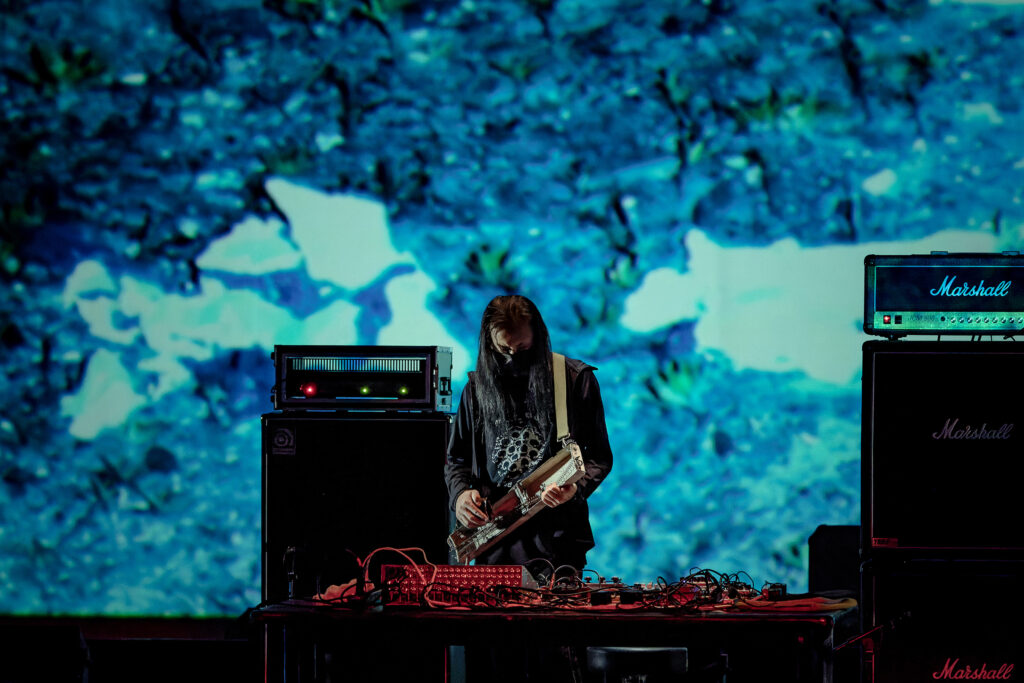
Starting in the mid-1980s, Merzbow releases are also being put out by international labels such as RRRecords in the USA, the Swiss Schimpfluch group or on the Dutch imprint Korm Plastics. The group also tours more regularly and extensively, even visiting the Soviet Union for a now-legendary concert in 1988. Meanwhile, the sound on the numerous releases becomes more demanding and, at the latest with albums like »Rainbow Electronics« (1990, Alchemy Records), reaches the intensity levels for which Merzbow is known to a wider audience today. The mundane noises or mechanical sounds and samples give way to a machine-like hissing and humming. Merzbow starts sounding more psychedelic than surrealistic—more challenging than ever before.
In the course of the 1990s, international mainstream interest in noizu increases noticeably, though it is being represented to foreign audiences with exoticist undertones. Compilations like »Land Of The Rising Noise« (1993, Charnel) or »Extreme Music From Japan« (1994, Susan Lawly) paint a picture of the phenomenon that is not always nuanced. Television appearances such as that of C.C.C.C. and Hijokaidan on an Italian channel in 1997 underline all the more that the West looks at the phenomenon with amused fascination rather than taking it seriously aesthetically or conceptually: noizu is confusing to many because they do not understand the meaning behind the cacophonous noise or rather do not quite understand that there is actually little to understand about it. Or that it can also be a lot of fun.
The international metal scene reacts more sympathetically to the phenomenon and quickly embraces Merzbow’s harsher sound. It’s a mutual affection: the project’s most famous albums to date were not only released on the metal label Relapse, but had themselves been inspired by grindcore and death metal. They were complemented by collaborative albums with the hardcore band Man Is The Bastard’s noise side project Bastard Noise (1996, Relapse) or grindcore group Gore Beyond Necropsy (1997, Release Entertainment). The result is a sound is challenging, dense, pulsating, and most of all harsh—more metal than metal could ever be.
A Laptop, Boris, Pinhas and Pándi
While working on the monumental »Merzbox« in the late 1990s, Akita reaches another turning point. On the one hand, Merzbow becomes his solo project again after Akita had regularly collaborated with other artists for its live iteration throughout the 1990s. On the other, he begins to work purely digitally. The laptop had already been established as an instrument in the context of electronic and noise music around labels such as the Viennese institution Mego, but now it’s Akita’s turn to explore its possibilities as a noise making machine.
Even during this transitional period however, Merzbow’s releases feature a lot more than blistering high-pitched frequencies and rumbling bass cascades. »Aqua Necromancer« (1998, Alien8 Recordings) plays with samples of prog rock music, »Merzbeat« (2002, Important Records) makes ample use of drum breaks. In addition, Akita releases stylistically even more diverse collaborations with a variety of artists such as Genesis P. Orridge, Pan Sonic and, last but not least, the Japanese metal band Boris, with whom he still collaborates regularly today.
»The dichotomy between ›music‹ and ›noise‹ was one theme when I started Merzbow, but it is no longer an issue at all. The value of ›noise‹ must have changed a lot between then and now.«
Merzbow
Together with Boris, Akita frequently performs live and has released a number of collaboration albums with them over the past two decades. »In the case of live concerts, it is also about the loudness of the sound. Acoustically, we may be hostile to one another,« says Akita. The process is a semi-improvisational one: the band shreds through its set list while Akita reacts to it on the fly. It’s similar with their many studio albums, for which Boris records the songs before Akita underpins them with noise. »It’s a fusion,« he explains.
Akita also has worked closely with psych-rock legend Richard Pinhas, mastermind of the band Heldon, and drummer Balász Pándi since the late 2000s. Solo releases such as the 13-part »Japanese Birds« series (2009, Important Records) as well as »Keio Line« with Pinhas (2008, Dirter Promotions) and the numerous (live) collaborations with Pándi and other artists mark a further change in Merzbow’s aesthetic during this time: The drums, as well as other acoustic and electronic hardware, are again integrated into the setup; the laptop stops being the sole or even primary working tool.
Vegan Straight Edge Noise
The early noughties had also marked a thematic turning point in Akita’s oeuvre. For long stretches, the releases from Merzbow’s discography bore self-referential or seemingly meaningless or arbitrary titles. Occasionally, they and the accompanying artwork were an expression of Akita’s thematic and aesthetic engagement with other subjects that along with sound and art more generally, he had also dealt with as the author of several books throughout his career. In 2003 however, Merzbow has however become a »vegan straight edge noise project«.
In the early 2000s, Akita begins to deal intensively with animal rights issues and consumer ethics, adopts fan-tailed pigeons (of which he nowadays regularly posts photos on his Twitter account) and in 2005 even publishes the Japanese-language book »Cruelty Free Life« to plead for a more conscious treatment of other species. Animals and their exploitation by humans, as well as other ecological subjects, have increasingly permeated his work as Merzbow ever since.
His records wear those themes on their sleeve, literally speaking. The title of an album first released in 2007 and reissued in 2022, for example, was »Peace for Animals«, »Animal Liberation – Until Every Cage Is Empty« the name a more recent release on Cold Spring. A new collaboration with Bastard Noise from 2022, »Retribution by All Other Creatures«, was even more explicitly dedicated to the topic of zoonotic diseases such as COVID-19. Akita points out that the virus can be traced back to the wet markets of Wuhan and thus the sale and mistreatment of live animals. »In other words, if humans harm animals, it will come back to harm humans.«
Akita wants to broadly educate the public on these issues and uses his releases to do so. »I believe it is good for listeners to be aware of animal cruelty and environmental issues.« They are thus sometimes enriched with information, and the proceeds from some are donated in part or in whole to animal rights organisations. Does all this shape Merzbow’s aesthetic, though? »I don’t know if there is an ›animal rights sound‹,« says Akita. »But at least the works since 2003 must have something to do with it, as long as I make them. The same applies to other works that do not have animal rights as a theme.« As it happens, personal convictions are always reflected in one’s own actions, consciously or not.
Other releases, such as the album »Hope,« released at the end of 2022 via the charity label I Shall Sing Until My Land Is Free, from which parts of the proceeds go to humanitarian aid for the Ukrainian population, also underline a certain political dimension of the Merzbow project and the person behind it. Whereby the two are not necessarily the same, as Akita points out: one is an art project, the other a person with his own interests. These interests have shifted over the years in conceptual and aesthetic terms. »The dichotomy between ›music‹ and ›noise‹ was one theme when I started Merzbow, but it is no longer an issue at all. The value of ›noise‹ must have changed a lot between then and now.«
However, this by no means means that Merzbow will turn silent in the near or long future. While new material is being released constantly on various labels around the world, and reissue projects of albums such as »Oersted,« »Cloud Cock OO Ground,« »Scene« and »Tauromachine« are currently under way, Japanese label Slowdown has been overseeing a very extensive series of archival releases since 2018, soon to be concluded with what will probably be another very massive box set called »New Ear Control.« It might turn out to be the next in a long line of superlatives with which the name Merzbow will inevitably remain associated.







